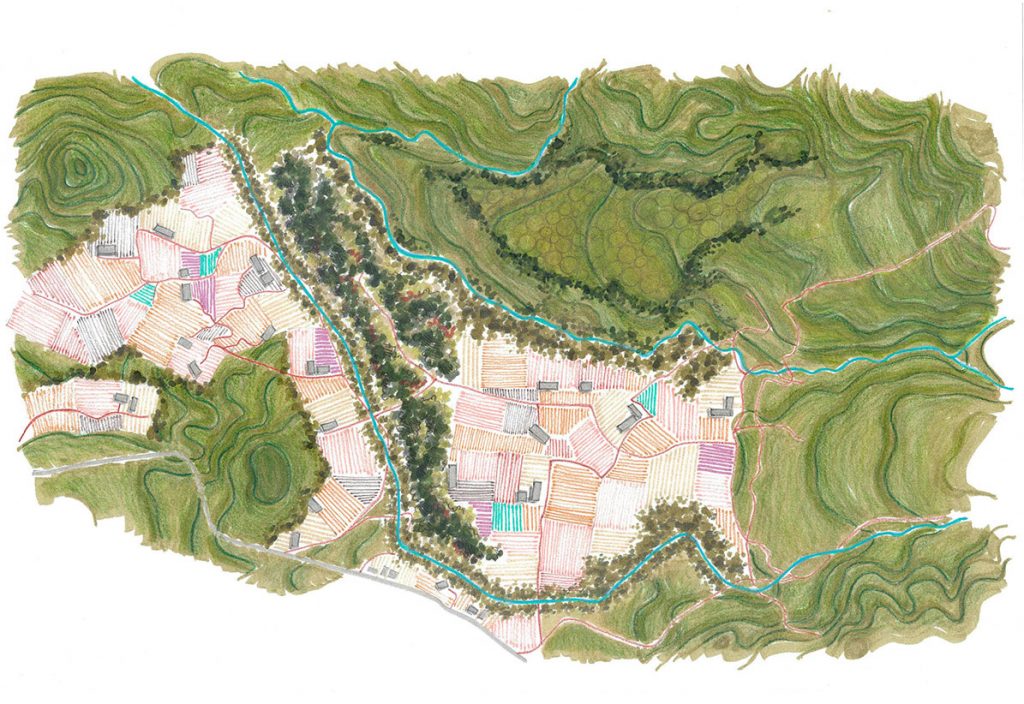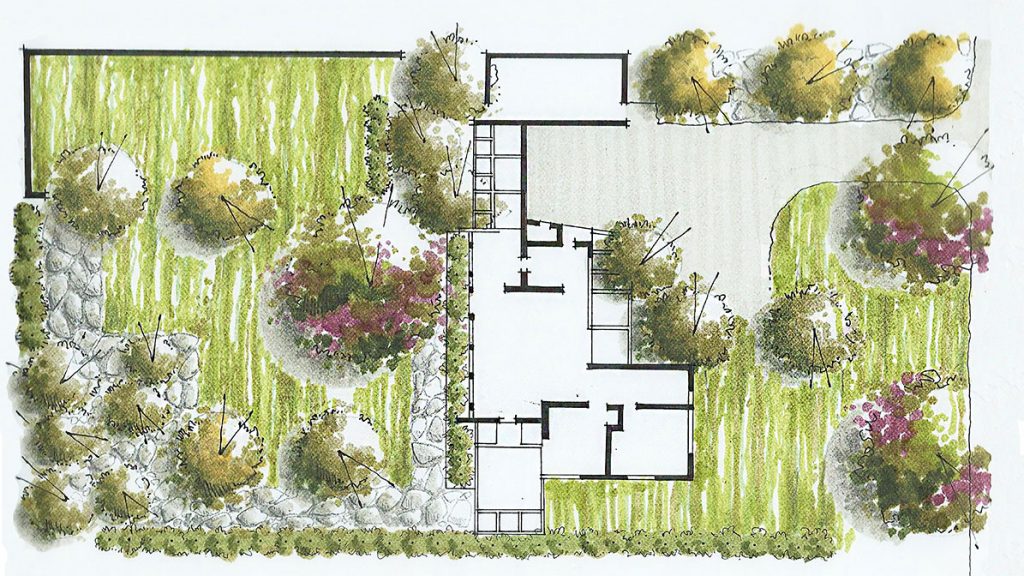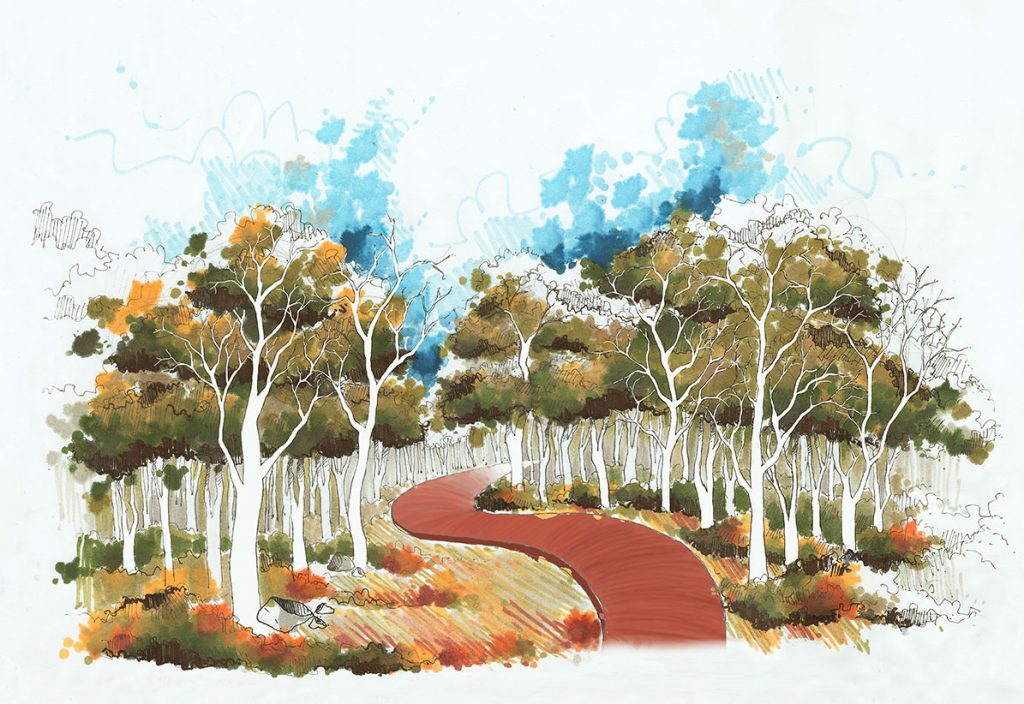Drawing emotions and experiences
Stephanie Martínez Lagunas, tells us about her experience of creation through computer-assisted drawing and the beauty and value of freehand drawing.
I’ve spent so much time in front of screens that I no longer remember how life was before screens took over. It’s true, technology came to facilitate many aspects of life, from ordering the supermarket online to connecting with people from very different parts of the world with a single click.

Valle de Bravo, master plan
Por: Stephanie Lagunas
I can’t imagine what it was like to be an architect before a machine made it possible to create the most accurate plans in less than half the time. Computer-aided drawing allows you to create plans and images with the highest accuracy and realism in a short time. But there is something that machines (fortunately) have not yet managed to develop: sensitivity.
There is a very special connection between the brain, the hand and the paper. The brain thinks, processes, and immediately transfers it to the paper through the fine movements of the hand. Right now, that I think about what I write, my hand weaves everything, crosses out here, adds an idea there, throws an arrow to unite two concepts… The creation process cannot happen directly from brain to machine, it takes the natural process of using your hand and letting it dance to the rhythm of ideas. This is where the beauty and value of freehand drawing resides.
Architects draw to transmit ideas, we draw as the first step to create spaces that do not yet exist, to communicate with future users of these still imaginary spaces. We draw as a synthesis process.
By drawing we leave a small part of who we are. The freehand drawing has a soul, it has a bit of the essence of who imagines what is captured on paper. Due to the lead times in landscape architecture projects, it might be thought that computer-aided drawing is the best and fastest option, but this is not necessarily the case. Freehand drawing allows ideas to flow naturally early in the design process. Therefore, taking the pencil when we start a project is not up for discussion.

Valle de Bravo master plan
Illustration: Stephanie Lagunas
But there also comes the moment of presenting the project to clients and there is something very valuable that we must not forget at that time: beyond seeking accuracy and perfection in our sketch, it is about seeking expressiveness in the images of the project that is presented. You have to sell the project, and selling implies helping your client solve a problem, it implies contributing to improve the lives of others, transmitting positive feelings to them.
A landscape architecture project presented to the client by hand, with the right technique, with great expressiveness and clearly showing the project (without having to reach pure realism), could sell the project more, because more than showing what the space will look like, you are also making them feel what it will be like to be there and even allowing them to use their imagination a little bit.

House architectural plan
Illustration: Stephanie Lagunas
However, it is not a matter of throwing the computer out of the window and returning to the use of the pencil only. There will be times when the computer is undoubtedly the best medium for technical drawings, because in those cases we do not have emotions as a priority. It is a matter of choosing the best medium for each stage of landscape architecture projects. But even with all the technological tools available to us, let’s not allow the fast-paced life in which we are immersed to make us lose sight of the value of things that take time to be created.

Target image for Eco-cemetery project. The sketch translates the concept of the project of Landscaper Paloma Alba
Illustration: Stephanie Lagunas








